
|   |

|   |
 e-mail: arshiyasethi@gmail.com Going viral, Going global: An artistic response to the challenges in the times of Corona June 6, 2020 In one of my earlier columns titled 'With "a lover's smile": Strengthening resolve in the times of Corona', that came out on April 25, 2020 , I had talked about how the arts were capable of carrying even difficult messages, because they charmed, like a "lover's smile". I pegged the column on an enactment of a poem, in dance, by Kathak dancer and data analyst Mrinalini, on the conditions we were facing during the times of Corona. It effectively told us of the constraints to our lives in the 'stay at home' circumstances, the protocols we had to follow of washing hands, sanitizing, physical distancing and reminding us of our social responsibilities, even while kindling a flame of hope. It was based on a powerful Hindi poem by Kuldeep Mishra. This reached us in a digital format and being on social media it is in a way immortalised and will always be there for reference. While in this column I was excited that this artistic piece had been picked up to be part of a news show, the column that I write today, takes off from Mrinalini's effort but takes us to a local artistic response that became a global endeavour with dancers, young and old, senior and junior, freshers and icons, Indian and international, coming together to mark the challenges in the times of Corona, and the only way forward. 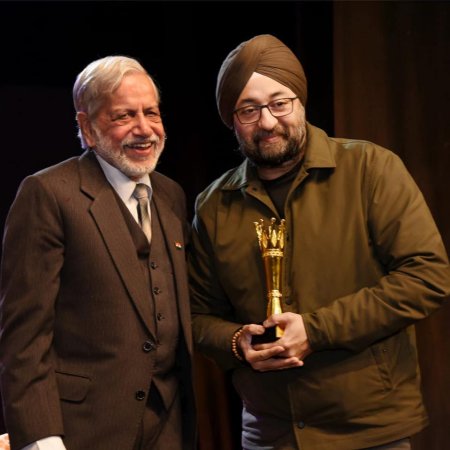 Avinash Pasricha & Innee Singh It was sent to me very tentatively by Delhi based dance photographer, Innee Singh. Innee's real and formal name is Indirpal Singh. But I can assure you no one knows him by his full name. Innee is an unusual but winning mix of shy and friendly. For those who have got used to the brilliant photo-lens signature of the legendary Avinash Pasricha's work in dance photography, you may have noticed that there are nowadays some photographs, particularly of the younger generation dancers, that don't follow Avinash-ji's lines. If you have seen them, you would have noticed it. And if you have noticed them, then there is a strong possibility that they are the work of Innee Singh. One morning about a month ago, when I opened my phone, I saw a message from Innee. I clicked to find a dance film called "Hum Hai Saath". You can catch the film here. Here was a Corona messaging film that featured young dancers who had already come into notice for the promise of their talent - dancers Vidha Lal (Kathak), Arushi Mudgal (Odissi), Divya Ravi (Bharatanatyam), Divya Goswami (Kathak), Dakshina Vaidyanathan (Bharatanatyam) and Vrinda Chaddha (Odissi). I decided to write about it in my column. Lovely dancers all, they sensitively captured the mood of the poetry, and had used the evocative shots each came up with, smartly on the editing console. By the time I called Innee to know more about it, quite some days had passed. The story that he told me apart from being fascinating, mapped how a small effort can go beyond viral, and become global. 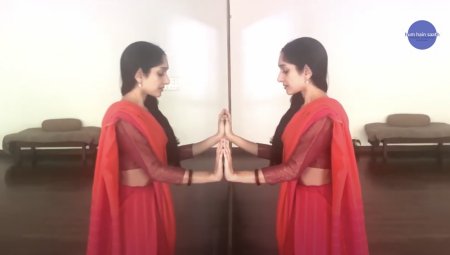 Arushi Mudgal 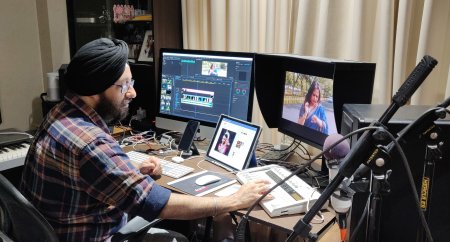 Innee working on his home editing console My first question was had he filmed the dancers? "No," he answered. "The lockdown did not allow that. Each dancer had used his/her own imagination and had done the shooting." They sent him their material, which he had edited. The photographer left behind the photography in this case and became the editor. "No," he answered again, and softly mentioned that he had also done the music for it. Behind that lies an interesting story, and I will share that with you in a moment, but suffice it to say that his answer caught me quite by surprise, and Innee who till then I had imagined to be a "junooni", obsessed dance photographer, turned out to be a man of many parts. Innee Singh's family owns several stores of music instruments. His grandfather owned the iconic music store in Nai Sadak called "BINA" which he set up in the 1950s. Innee owned another store in the Jama Masjid area that was there for over 40 years. His owned family set up is now in Lajpat Nagar by the name of DMS (Delhi Musical Stores) which was set up a few years ago. Since his childhood, he has hung around these stores, watching musicians come and go and listen about instruments and music. He always wanted to learn music, "just for my pleasure", he specified in the conversation and began with tabla that he learnt from Rafiuddin Sabri for twelve years. "It became the tabla as we had one of the best tabla makers attached to our store, the late Yusuf bhai, and consequently many eminent tabla nawazes would come to our store and spend time there. I remember Shafat Ahmed Khan, Akram Khan and many artistes also from All India Radio. Rafiuddin Sabri was also one who would come often and I began learning from him." So the twelve years of the tutelage with Rafi bhai, gave him the confidence to tune this poem, I ask. "No", he said once again, "I also play the harmonium and I sing too. But I am master of none," he hastily added. Then, in an even more soft tone he told me that now he was learning the sarod from Ustad Amjad Ali Khan. 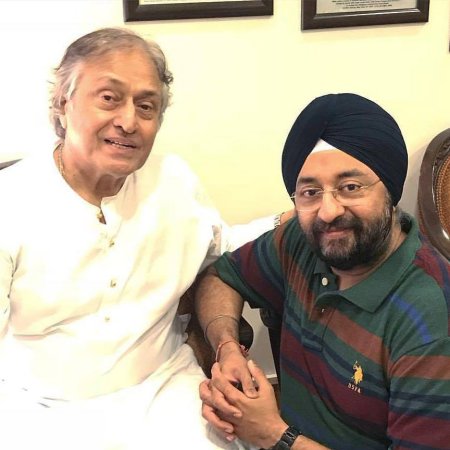 Ustad Amjad Ali Khan & Innee Singh This was getting even more intriguing. Why did we not know all this about Innee? How then did he get to be a photographer rising in fame as a dance photographer? "I was a keen photographer, photographing family members but even for them, I always used a film and not a digital camera. I never had thought of taking my interest in photography as a career. But once I started learning with Rafiuddin Sabri sahib I would accompany him to concerts and I got intrigued with what I was seeing". Many say that the process by which the musician becomes the music is magical and that expression that comes on to the face is of bliss - Ananda. That is what captured Innee and he is grateful to the musicians who let him photograph them, "with a commitment not to use a flash and with just a promise to share the images with them." Since then he has become a keen concert goer. For the last fifteen years or so, there is hardly a concert that he has missed in Delhi. Kamani, IIC, IHC are his daily beat. Despite the fact that on a census document he would be described as a business man, essentially Innee is an artiste, or at least an artiste mijaaz, with the temperament of an artiste. It was at the SaMaPa Sangeet Sammelan 2010, that Innee first encountered dance from close quarters. The finale on the final day was a dance concert by Raja Radha Reddy and their group. While shooting the earlier musicians, he noticed the warm ups and rehearsals on. He stayed back to watch and shoot. Though mesmerised, he doesn't remember getting any memorable shots. He had to wait two years before catching his next dance concert and he remembers it was Geeta Chandran's. Another two years later he heard about the Parkaya Festival organised by Nehha Bhatnagar through her Sarvam Foundation, and the fact that day it would feature Bharatanatyam dancer Rama Vaidyanthan. Seeking permission from Rama and Nehha, Innee took some images which he shared with them that very night. By the next day, when Innee came to the India Habitat Centre to catch the last day's show, his name was on everyone's lips. He was so surprised and wondered who this Rama Vaidyanathan was who had turned him into a celebrity overnight. This is another thing about Innee that is quite endearing - how little he knew about the landscape of the arts before he entered it, not to flit and flirt around but to commit and to stay. Today Innee is running a successful studio that even offers arangetram packages that include stills and films, starting from the pre-arangetram insights to the grandeur of the occasion, apart from having shot almost all Delhi dancers and many of the dancers from around India. Yet, he does not remember when he received his first payment out of this work. But then that is not the reason why Innee is in this field. Though trained as a musician, it is the combination of the auditory experience of music and the visual feast of the dance that made for a heady overwhelming cocktail, getting him to click so many excellent photographs thereafter, that he has over twenty hard drives of up to 4 TB capacity filled with images. Innee is never satisfied with his work. That must account for great self imposed pressure. While he is so critical of his own effort a strange thing about him is that he does not view equally critically the work in dance that other photographers produce. In fact, he does not even look at their work, in an attempt to keep his eye clean. The only exception he makes is for the work of Avinash Pasricha which he devours. And rightly so! To paraphrase a popular Punjabi saying, that also gave the name of a well known play - Jine Avinash ji da kam nahin vekhya, oh janmaya hi nahin ( He who has not seen the work of Avinash ji, has not been born)! The play of course is Jiney Lahore nahi vekhya, oh janma hi nahin! 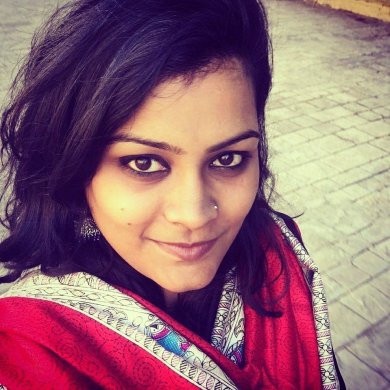 Shraddha Singh The video that Innee had sent me, "Hum Hain Saath", was based on a poem written in the midst of the Corona pandemic by Shraddha Singh and recited by theatre artiste Ravinder Pant. Shraddha, originally from a Varanasi based family, was born and brought up in Delhi. An MBA from I.P. University she spent a while in the corporate sector. But her heart was always drawn to the arts. As she travelled in the course of her work she realised that few of the folk artistes and craftsmen were wanting their children to follow in their footsteps. She realised the fragility of these traditions which are India's unique wealth. She wondered that when no one lets go their wealth in land, gold and silver, how can we let go this artistic wealth of the country. The issue marinated in her mind for a while and she began considering how she could help these arts and artistes. That is when she founded Kalagrit, an initiative to build interest among youth in the arts by connecting arts, artisans, artistes and art lovers. "All that the artistes want is Maan and Samman, and I want to get it for them", says Kalagrit's founder. It gets its name from the coming together of the Hindi word 'kala' with the English word grit, "as it takes a lot of grit to take forward the kala," she explains. Shraddha, who had begun dabbling in writing poetry from her schooldays, found herself dealing with an outburst of poetic expressions and has written as many as eight poems during the various lockdowns. "Hum Hain Saath" was just one of them. For the video they took only one of the stanzas from the three stanza poem, "because we wanted to keep it short and yet give the artistes the space to build on," explained Shraddha about why she allowed this shortening of the poetic thought. "I had been missing photographing and attending dance performances and music. I was also feeling the need to do something creative with music since that has been my foremost love. A friend named Shraddha Singh who runs a large group called Kalagrit on Facebook/Instagram had written this poetry about social distancing. We discussed and she agreed to the idea. I composed this riff and played sarod for the first time in any recording. I was anxious and went to my Guru, Ustad Amjad Ali Khan sahab and got his permission and blessings. Only after he had heard it and had given me the go ahead, that I requested a few dancers to do some abhinaya on it, if they were willing. All of them agreed and we made this video." Was this his first video, I asked him. "No. My first video was the one in which Faiz meets Rabindranath Tagore - Sonam Kalra's 'Hum Dekhenge' video." Well, you could have knocked me down with a feather. Sonam is my younger cousin and I love that video, having watched it no less than ten times. Evidently I had not paid any attention to the credits, and merely getting carried away with the aural and visual impact and the defiance and resistance of two immortal literary pieces. That video has Sonam Kalra singing Faiz Ahmed Faiz's iconic nazm "Hum Dekhenge" juxtaposed with my dear friend Sunil Mehra's rendering of Tagore's "When the head is held high." You can see that video here. 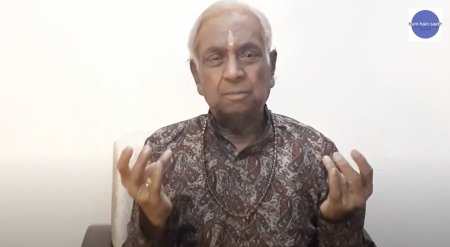 Pt Birju Maharaj Both videos, the Sonam one and the 'Hum Hain Saath', instantly became hits after they were uploaded. The phone did not stop ringing for the dancers featured or for Innee. One of the calls was from Usha RK, trained Bharatanatyam dancer and long time supporter of the arts, scholar, curator, presenter and media and stage personality, who is currently the Director of the Jawaharlal Nehru Cultural Centre, Moscow. Usha thinks big and has creative ways of exponentially multiplying the impact of an idea manifold. Her all India dance series on aspects of Indian mythology, well researched and presented by young dancers, the pick of the new crop, and mentored by her, were very popular. In Innee's video, which both Innee and Shraddha had seen as no more than a way of dealing with the ennui of the lockdown, Usha saw a far larger potential - at least a pan Indian sweep if not global. She contacted dancers in different cities and sent them the recording. Suddenly on Innee's home edit console landed up over 150 videos of some dancers he knew and many he didn't. Guided long distance by Usha, he put together almost twenty five videos with different combinations of artistes. They included a bunch of artistes and even solos. Among the solos that he values is the one that features Pt. Birju Maharaj.  Pt Rajendra Gangani  Rama Vaidyanathan Excitedly, Innee introduced me to a set of the videos. "We have one video with male dancers from Bangalore, of male dancers alone featuring Sathyanarayana Raju (Bharatanatyam), Murali Mohan Kalvakalva (Kathak), Surya Rao (Kuchipudi) and Pavitra Krishna Bhat (Bharatanatyam)." This video to the poem has dancers like Rajendra Gangani, Rama Vaidyanathan, Sujata Mohapatra, Deepika Reddy and others. 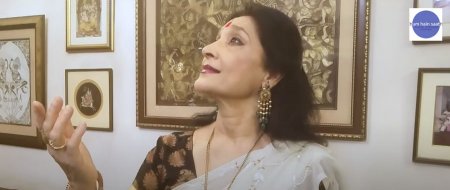 Ranjana Gauhar 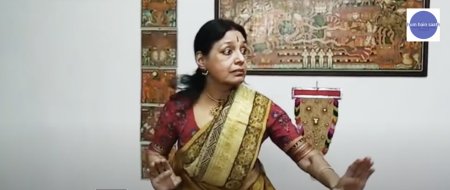 Bharati Shivaji 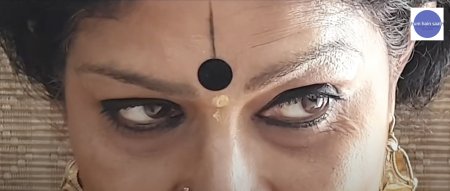 Geeta Chandran  Madhavi Mudgal "We have one video with senior artistes like Ranjana Gauhar, Bharati Shivaji, Geeta Chandran, Madhavi Mudgal and Uma Dogra." "Another group of fine dancers is featured in this video that has Vaibhav Arekar, Praveen Kumar, Jayaprabha Menon and others."  Vaidehi, Kanak Rele, Uma Rele "One video features the family of Kanak Rele, the doyenne herself, her daughter-in-law Uma and her granddaughter Vaidehi. Mumbai dancer Deepak Mazumdar is also featured in this video." "We even have a video with international artistes, from France, Italy and Poland. That has a totally different feel to it". There are even plans to have a video featuring only Russian dancers. If we do the math, it seems that as many as 150 dancers have illustrated the feelings behind the poem written by Shraddha Singh. And the numbers are only growing, even though no one is making any money, and these are difficult times where the artistes are facing severe financial crises. "These projects and music keep me sane in these difficult times so I try to keep myself busy in thinking about such works and involve other artistes," admitted Innee Singh. It seems that the idea has certainly caught on. Instagram views, YouTube views, circulation on hundreds and thousands of Whatsapp groups as dancers share this widely has ensured the highest visibility to this dance endeavour, in the times of Corona. Doordarshan National carried the first three videos. While doing a fund raiser on YouTube, for which she had invited some of the country's best known singers, renowned singer Malini Awasthi invited the videos to be included. At a high point of the show, just after Kailash Kher had performed, she brought on the videos, describing them as "Gagar mein sagar" or "an ocean in a pot of water". The Indian Embassy in China made a version using dancers from China. The video, albeit minus its original credits, was uploaded on the Government of India 'Mygov' site. "I never thought that something that we created with six dancers would be recreated with so many other dancers. In the case of classical dance, the expressions, the abhinaya, speak to people," says Singh with wonderment on his face. "I can't believe how far this small act of penning a few lines has gone," says Shraddha Singh. Welcome to the power of the arts!  Dr. Arshiya Sethi, trained in Kathak, has served as dance critic, commentator, institution builder for the arts, having created both tangible and intangible institutions and equities. She has been a Fulbright Arts Fellow (2003-2004) and a post doctoral Fulbright (2016-2017). Her doctoral work has been on the link between politics and dance in the case of Sattriya. She is presently working on the intersection of dance and activism / social justice through her NGO, Kri Foundation (estd. 2003), and has extended her academic work to Indian dance in the diaspora. Post your comments Please provide your name and email id when you use the Anonymous profile in the blog to post a comment. All appropriate comments posted with name & email id in the blog will also be featured in the site. |